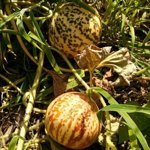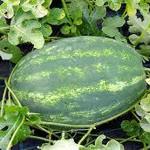FREE: ~*~*~* RARE!!! Safflower Seeds *~*~*~

A member of Listia gave this away for free!
Do you want FREE stuff like this?
Listia is 100% Free to use
Over 100,000 items are FREE on Listia
Declutter your home & save money

"Listia is like EBay, except everything is free" - Los Angeles Times

"An Awesome Way To Give And Get Free Stuff" - Michael Arrington, TechCrunch
This Stuff is Free Too:

FREE

FREE

FREE

FREE

FREE
The listing, ~*~*~* RARE!!! Safflower Seeds *~*~*~ has ended.
GIN=3333=205 Seeds
Names include Sallflower, Beni, Chimichanga, or Carthamus Tinctorius.
Safflower is one of humanity's oldest crops. Chemical analysis of ancient Egyptian textiles dated to the Twelfth dynasty identified dyes made from safflower, and garlands made from safflowers were found in the tomb of the pharaoh Tutankhamun. John Chadwick reports that the Greek name for safflower occurs many times in Linear B tablets, distinguished into two kinds: a white safflower, which is measured, and red which is weighed. "The explanation is that there are two parts of the plant which can be used; the pale seeds and the red florets."
Uses
Traditionally, the crop was grown for its seeds, and used for colouring and flavouring foods, in medicines, and making red (carthamin) and yellow dyes, especially before cheaper aniline dyes became available.
For the last fifty years or so, the plant has been cultivated mainly for the vegetable oil extracted from its seeds. In April 2007 SemBioSys Genetics claimed to have genetically modified safflower to create insulin.
Seed
Safflower seed oil is flavorless and colorless, and nutritionally similar to sunflower oil. It is used mainly in cosmetics and as a cooking oil, in salad dressing, and for the production of margarine. It may also be taken as a nutritional supplement. INCI nomenclature is Carthamus tinctorius.
Oil
There are two types of safflower that produce different kinds of oil: one high in monounsaturated fatty acid (oleic acid) and the other high in polyunsaturated fatty acid (linoleic acid). Currently the predominant edible oil market is for the former, which is lower in saturates than olive oil, for example. The latter is used in painting in the place of linseed oil, particularly with white, as it does not have the yellow tint which linseed oil possesses.
~*~*~* RARE!!! Safflower Seeds *~*~*~ is in the Home & Garden | Gardening | Gardening Seeds & Bulbs category

